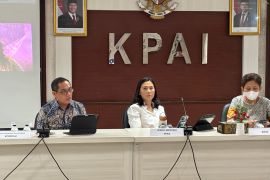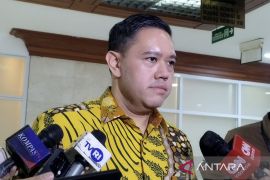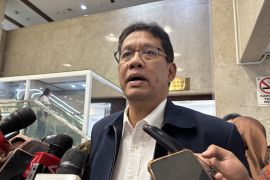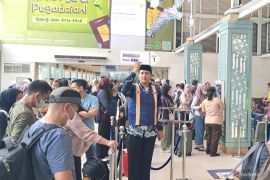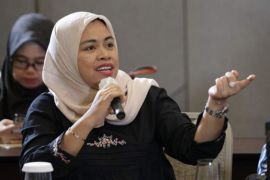"Consumers still need reliable source that tells stories with context," The Associate Dean of Global Program Missouri School of Journalism Fritz Cropp said.Palembang, S Sumatra (ANTARA News) - The rapidly growing social media should not be considered as threat but rather as an opportunity provider for development of traditional press media, an expert on communication stated on Tuesday.
Despite its rapid information flow, social media has closed the credibility gap in recent years and does not have much perspective, The Associate Dean of Global Program Missouri School of Journalism Fritz Cropp stated during a discussion of the Confederation of ASEAN Journalists (CAJ) here, Tuesday.
Young people primarily use social media to spread news.
Information travels rapidly through social media such as Twitter, and spreads easily by a so-called "Retweet" option.
"But it often leads us back to the traditional media. Therefore, credibility is the key for traditional news media," Cropp elaborated in front of journalists representatives of ASEAN member countries.
"Consumers still need reliable source that tells stories with context," Cropp pointed out.
To provide stories with context, traditional media outlet are needed to redouble their efforts to be more credible, he explained.
Social media became a threat because it changed the way media operates, but it also provides opportunity for journalists to interact with their viewers and audience.
It should be viewed as a market opportunity and a means to gather feedback as people are talking about news through social media, Cropp pointed out.
The current trend now is that the traditional media are asking people to report news through citizen journalism.
"We see connection between traditional and social media here. Thats the beauty of social media," Cropp added.
Meanwhile, ANTV Chief Editor Zulfiani Lubis also stated that social media was not a threat to traditional media.
"It will even make us better because our responsibility as journalists will be even bigger in the digital era," Lubis emphasized.
Journalists will serve as curators of healthy and credible information that will prevent hoax from anonymous source.
"I use social media, such as Twitter, in significant ways to contribute to the newsroom," Zulfiani Lubis, also called Uni, added.
Twitter can be used to monitor current news and to compare it with others as well as to monitor statements from celebrities or public officials to be followed, Uni stated.
The flow of information in social media, especially in Indonesia, is considerably great as the country is said to be the worlds fifth largest country with Twitter users, while Jakarta ranks first in twitter traffic in the world.
"We converse a lot, including criticizing the government," Uni stated.
The conversation in social media, sometimes also becomes the angle of a story, especially when top figures oppose each other through Twitter, Uni pointed outaid.
Uni Lubis predicted that in the near future, internet will replace radio as the second source of information after television.
Some 100 journalists from South East Asian countries have gathered in Palembang from Feb. 10 to 12, to discuss the current challenges for the media and the role of journalism in ensuring stability, development and peace of the region.
Journalists were shown a presentation and were invited to participate in a course on communication featuring several keynote speakers such as Associate Dean of the Global Program at the Missouri School of Journalism Fritz Cropp, Secretary of the Directorate General of the ASEAN Corporate Rosmalawati Chalid, President of the PR Society Magdalena Wenas, and Indonesian senior journalist Sabam Siagian.
On Wednesday (Feb. 12), the journalists will visit the site of the future CAJET building in Jakabaring, Palembang.(*)
Editor: Heru Purwanto
Copyright © ANTARA 2014

